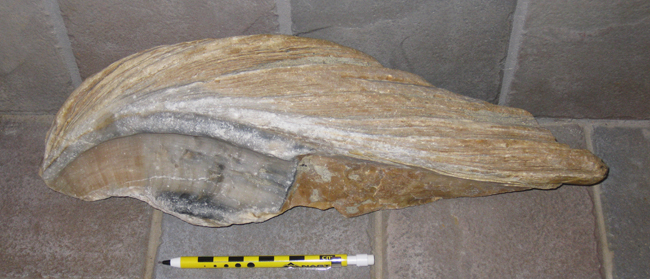My mother-in-law collected a cool oyster for me:

She found it down in Ecuador; I think on the beach.

She says it’s a fossil, but I haven’t been able to identify it at all, as either ancient or modern. Anyone know?
My mother-in-law collected a cool oyster for me:

She found it down in Ecuador; I think on the beach.

She says it’s a fossil, but I haven’t been able to identify it at all, as either ancient or modern. Anyone know?
Is that rock matrix adhering to the specimen? From the photos it looks like a slightly greenish or buff coloured, sandy mud(stone?). If so, that would be good enough for me to call it a fossil. Oyster shells are very conservative over time (Jurassic to recent, at least), with lots of intra- and relatively little inter-specific variability, making them hard to identify unless you know what formation they came from and have good literature. Nice oyster!
Yes, it is. I had the same thought; it’s nice to hear it echoed by a competent geologist! Thanks.
It ressembles to a giant extinct oyster that are very abundant in southern Europe : Crassostrea gryphoides (also known under the older name Ostrea crassissima). This species from the Miocene period reaches commonly 30 to 45 cm, with some individuals grow up until 70 cm.
I have many specimens from southern France.
I don’t know what species belongs the Ecuadorian specimen. But there is likely whether the genus Crassostrea (could be a different species from the European one).
Thanks for the insight!
Crassostrea titan